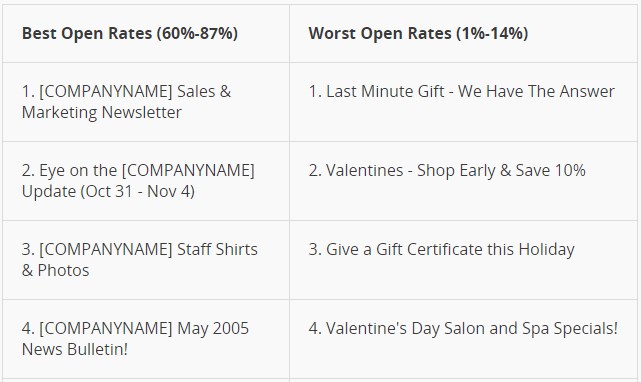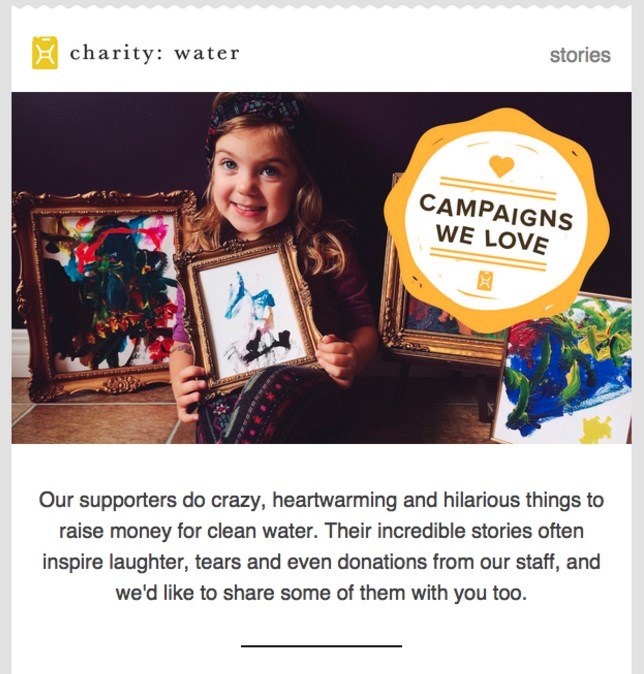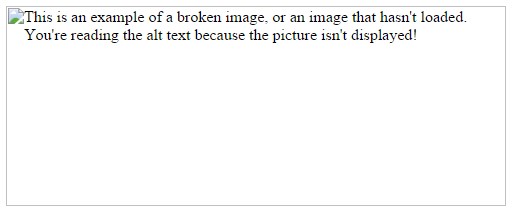-
 8 min. read
8 min. read
-
 Ryan Maake
Ryan Maake Lead Marketing Consultant
Lead Marketing Consultant
- Ryan is a Lead Marketing Consultant at WebFX. Follow him on Twitter @rmaake107! @rmaake107
Crafting the perfect email newsletter can be tricky.
There are many variables to account for, and it’s often unclear why certain changes result in growth or loss of subscribers. Still, running an email newsletter is a fantastic way of growing your company, building brand loyalty, and helping your customers.
So if you’re thinking of starting a newsletter, or want to improve your current one, here are the three things every newsletter should have.
1. A great subject line
The subject line could very well be the most important part of your entire newsletter. Why? Convince & Convert found that 35% of email recipients open email based on the subject line alone.
That’s right, a whopping 35%.
And really, what’s the point of a newsletter if no one’s even looking at it?
Use proper language
Simply put, don’t be spammy. Avoid using phrases associated with advertising, like “free,” “buy now,” and “special offer.” This type of language doesn’t belong in your subject line, and will only shrink your subscriber base. What language should you use, then?
Mailchimp analyzed the open rates of more than 40 million emails, and found that straightforward subject lines which describe the content of the email perform best.
Some even reached open rates as high as 87%!

As Mailchimp puts it, “don’t confuse newsletters with promotions.” No one wants to sign up for a newsletter only to get an email with the subject line “80% DISCOUNT TODAY ONLY CLICK NOW!!!”
Here are some examples of strong subject lines from Copyblogger. Notice the standardized format of [Company Name] [Newsletter #] [non-spammy copy]:

Branding the emails with [MyCopyblogger] ensure users will recognize the newsletter right away, instead of thinking it’s spam, an accident, or random advertising.
The subject lines all work well with the tone that Copyblogger typically uses, too. Take note of the subject line variation as well.
Sometimes they ask a question, some are “cliffhangers,” and some are straightforward.
None are spammy, and they all reference the type of content you would expect to find in a newsletter from Copyblogger.
Pay attention to how long your subject lines are
While you can find various statistics supporting different “optimal” subject line lengths, Mailchimp released some comprehensive data regarding subject line length.
Their conclusion? Subject line length “means absolutely nothing” as far as open rates are concerned. This may be true, but there’s still merit to keeping your subject lines around the 30 character mark.
Why?
This ensures your subject line is optimized for mobile email users, as 30 characters is the truncation limit for most mobile email interfaces.
Considering that users first open new emails on mobile devices up to 40% of the time, mobile optimization is a major benefit.
![]()
As for other subject line best practices, Adestra’s 2015 subject line analysis report also indicates that personalized subject lines see a jump in open rates as high as 22.2%. To recap: Subject lines that are straightforward, short, and personalized are the way to go.
2. Images
Everyone likes pictures. It doesn’t matter how much you like reading, if you open a newsletter and see a 4,000 word wall of text, you’re probably going to hit the back button.
But if you open a newsletter and immediately see an eye-catching image at the top, you’ll look at it and then naturally continue reading the email.
Charity: water’s newsletters are a great example of how to effectively use a vibrant, attention-grabbing image:

They start the newsletter off with a big, colorful image, leading into a two sentence hook for the rest of their content. It flows well and makes subscribers want to keep reading.
As you select your images, make sure that they are relevant to your content.
You want them integrated into your content, so there’s a sense of continuity as your users read on.
Unrelated images will draw attention away from the purpose of your newsletter and result in a poor reading experience for your subscribers. As a last note on images, make sure they all have alt text. Alt text is text that’s displayed when images aren’t loaded:

Remember that many email platforms have images disabled by default.
It’s very important to have alt text, so something shows up even if the images don’t.
This is doubly significant if you use graphics or pictures for your calls to action. No alt text means your CTA won’t be displayed, period! Speaking of CTAs…
3. Effective CTAs
Let’s start with a piece of general advice: Pick one primary CTA for your entire newsletter. It’s fine to have multiple CTAs, but make sure you have an overall goal for your newsletter that’s reflected by the biggest, best CTA of all.
All additional CTAs should be smaller and less prominent. Now, what makes an awesome CTA?
Great copy
A strong CTA needs to be prominent, visually striking, and will pleasantly but unequivocally describe a purpose.
Instead of commanding “click here!” your CTA should describe what will happen when a subscriber does click there. Look at the “theSkimm” newsletter for an example of a simple, well-done CTA:

The color is striking and there’s a clear “follow & share us” instruction, which is enhanced and supported by links to their social media accounts right below.
Likewise, CTAs “Get the stats,” “Read the story,” and “Preview the report” are all good examples of specific CTAs that are instructive without being too pushy.
Keep in mind, there’s no magic formulas for CTAs. Effective CTAs vary greatly between industries, and what works for a marketing firm may perform abysmally for a car dealership.
As a result, it’s important to conduct your own testing when it comes to CTAs.
Stellar design
CTAs can be text links or visual elements, like buttons. This is another area where performance will vary depending on your specific company, industry, and newsletter.
In general, however, buttons will outperform text link CTAs. Buttons are bigger, more colorful, and more eye-catching than a simple link ever will be.
The folks over at Campaign Monitor saw their click-through rate increase by 28% when they used a button CTA instead of a text link with the same copy.
After all, which looks better?
 or ?
or ?
Lastly, your CTAs are another opportunity for mobile optimization. The bigger the CTA is (within reason), the easier it is to click using a touch screen.
4. Bonus: One thing every email newsletter should do
Now that you know three things every email newsletter should have, here’s the one thing every company with an email newsletter should do:
Test. As with most marketing channels, email marketing involves a seemingly infinite number of variables to manipulate and optimize. This is why, regardless of your industry, it’s important to test, test, test, and then test some more.
The three qualities I’ve highlighted are great rules of thumb, but you never know what’s going to work best for you.
Maybe your readers will respond better to a newsletter with no images and excellent copy.
Maybe longer subject lines will result in a higher CTR for you. You simply don’t know until you get out there and start testing.
The good news is, basic testing for email marketing can be quite straightforward. For example, you can perform an A/B test on your subject line by coming up with two subject lines and using one for half of your subscribers and one for the other half.
Your winner is the one that performs better within whatever metric you’re measuring.
Does your company run a newsletter?
If not, WebFX can help.
Contact us today to learn more about email marketing services!
-
 Ryan is a Lead Marketing Consultant at WebFX. Follow him on Twitter @rmaake107!@rmaake107
Ryan is a Lead Marketing Consultant at WebFX. Follow him on Twitter @rmaake107!@rmaake107 -

WebFX is a full-service marketing agency with 1,100+ client reviews and a 4.9-star rating on Clutch! Find out how our expert team and revenue-accelerating tech can drive results for you! Learn more
Try our free Marketing Calculator
Craft a tailored online marketing strategy! Utilize our free Internet marketing calculator for a custom plan based on your location, reach, timeframe, and budget.
Plan Your Marketing Budget

Maximize Your Marketing ROI
Claim your free eBook packed with proven strategies to boost your marketing efforts.
Get the GuideTry our free Marketing Calculator
Craft a tailored online marketing strategy! Utilize our free Internet marketing calculator for a custom plan based on your location, reach, timeframe, and budget.
Plan Your Marketing Budget





